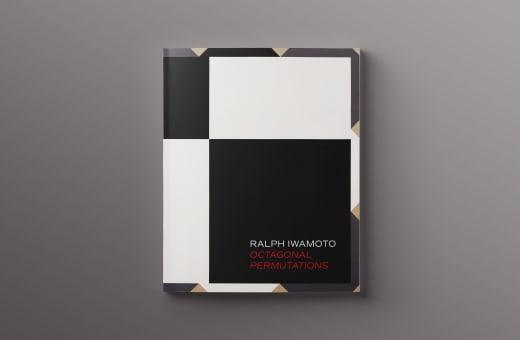News

Idelle Weber 1932 - 2020
It is with great sadness that Hollis Taggart announces the death of Pop-art icon Idelle Weber. Weber passed away on March 23 at the age of 88.
Over the course of her multi-decade career, Weber produced an impressive oeuvre that drew on and expanded the visual vocabularies of the Pop-art and Photorealist movements. From her early silhouette works of the 1960s and ‘70s, which featured faceless black and white contoured figures in corporate and abstract settings, to her photorealist paintings that captured the detritus of urban life, Weber’s practice poignantly reflected American life and culture. In her works, turbulent political themes, such as the Vietnam War, the Kennedy assassination, consumerism, and environmental decay, were distilled into essential forms. This dynamic interplay between formal and cultural investigation set Weber apart from contemporaries like Andy Warhol and Roy Lichtenstein, and positioned her as a critical voice in the development of American history and art.
Weber’s distinct approach and vision earned her an early place in New York’s male-dominated art circles. She was represented by Bertha Schaefer from 1962-1964 and her work was shown in solo presentations at Bertha Schaefer, Hundred Acres gallery, and OK Harris as well as in important group exhibitions such as Pop Goes the Easel (1963) at the Contemporary Arts Museum Houston, Contemporary Drawings (1964) at the Guggenheim Museum, The New American Realism (1965) at the Worcester Museum of Art, and Pop Art and the American Tradition (1965) at the Milwaukee Art Museum.
Today, as the contributions of post-war women artists have begun to be re-examined, Weber’s work has gained renewed recognition. In 2011, she was featured in the Brooklyn Museum's exhibition Seductive Subversion: Women Pop Artists, 1958 - 1968, and her acrylic cubes from that period are now on display in MoMA’s newly re-envisioned galleries. In 2013, the Chrysler Museum of Art acquired her masterpiece Munchkins I, II, & III (1964), and in 2016 the Los Angeles County Museum of Art acquired her iconic sculpture Jump Rope (1967-68).Her work is also held in numerous other significant collections, including the Art Institute of Chicago, Brooklyn Museum, Harvard Art Museums, Metropolitan Museum of Art, and Yale University Art Gallery.
Weber was born in Chicago and grew up in Beverly Hills. She showed an incredible aptitude for the arts at an early age, and pursued artistic study at Scripps College and UCLA, where her instructors included Millard Sheets and Stanton Macdonald-Wright. Weber taught briefly in Los Angeles before moving to New York in 1957 at the age of 25. In the same year, one of her drawings was included in the Museum of Modern Art’s exhibition Recent Drawings U.S.A. and was later purchased by Gertrude Mellon.
By the early 1960s, Weber became renowned for her silhouette paintings, a seminal body of work which featured a range of anonymous figures in office and corporate settings as well as against vibrantly colored and patterned abstract backgrounds. Working with visual motifs that appear both anonymous and universal, such as the escalator-riding businessmen featured in Munchkins I, II, & III, Weber depicted certain archetypes — office workers, couples, brides, politicians, athletes — in quotidian activities, suggesting the effects of standardization and commercialization on American post-war culture.
These works brought together Weber’s interest and study in both representational painting and graphic design. At the same time, her engagement with current events and the rapidly shifting nature of American society gave her works a notable edge. In time, these figures began to occupy three-dimensional forms such as in her series of Lucite cubes, extending Weber’s formal experimentation and innovation beyond painting and drawing. She also created several large-scale plexiglass wall sculptures, including Jump Rope, which was acquired by LACMA for their permanent collection in 2016.
In the late 1970s, Weber began to shift her focus towards photorealism, including representational paintings of New York City fruit stands, storefronts, and, most notably, litter. She became a leading practitioner within the movement, and in 1991, her painting East End Bufferin (1990) was included in the Whitney Museum exhibition, Six Takes on Photo-Realism, alongside quintessential works by Richard Estes, Robert Bechtle, Robert Cottingham, Chuck Close, and Audrey Flack. In the following decades, Weber turned her focus from trash to images of foliage, flowers, water, pebbles, and other natural subjects, continuing the evolution of her practice.
In 2018, Hollis Taggart, which had been working with Weber for a number of years, began to formally represent her work, focusing on bringing her dynamic and essential contributions to the development of post-war art to new audiences and into the narratives of art history. The gallery has hosted two solo presentations of her work, including Idelle Weber: The Pop Years (2013), which received substantial critical acclaim, and Idelle Weber: Postures and Profiles from the ‘50s and ‘60s (2018). Weber continued to paint and take an active role in the presentation of her work through the end of her life.
Hollis Taggart will continue to represent the full scope of Weber’s oeuvre. We look forward to organizing many exhibitions of her significant body of work and to bringing to further light the incredible depth and intricacy of her artistic output.








